
How to Use MH-MINI-360 Buck Converter: Examples, Pinouts, and Specs
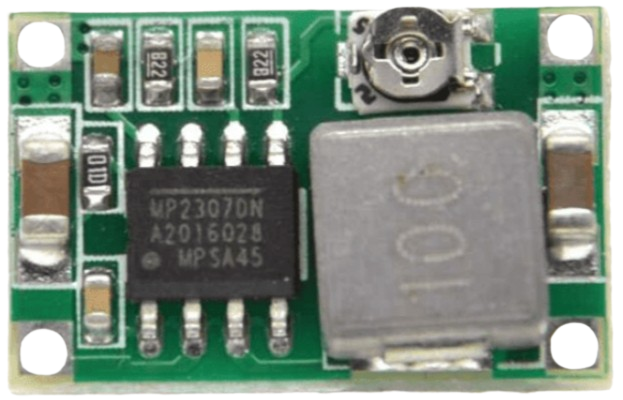
 Design with MH-MINI-360 Buck Converter in Cirkit Designer
Design with MH-MINI-360 Buck Converter in Cirkit DesignerIntroduction
The MH-MINI-360 is a compact and highly efficient DC-DC buck converter designed to step down higher input voltages to lower, stable output voltages. Its small size and high efficiency make it ideal for powering low-voltage devices from higher voltage sources, such as batteries or power supplies. This module is widely used in DIY electronics, embedded systems, and portable devices where space and power efficiency are critical.
Explore Projects Built with MH-MINI-360 Buck Converter
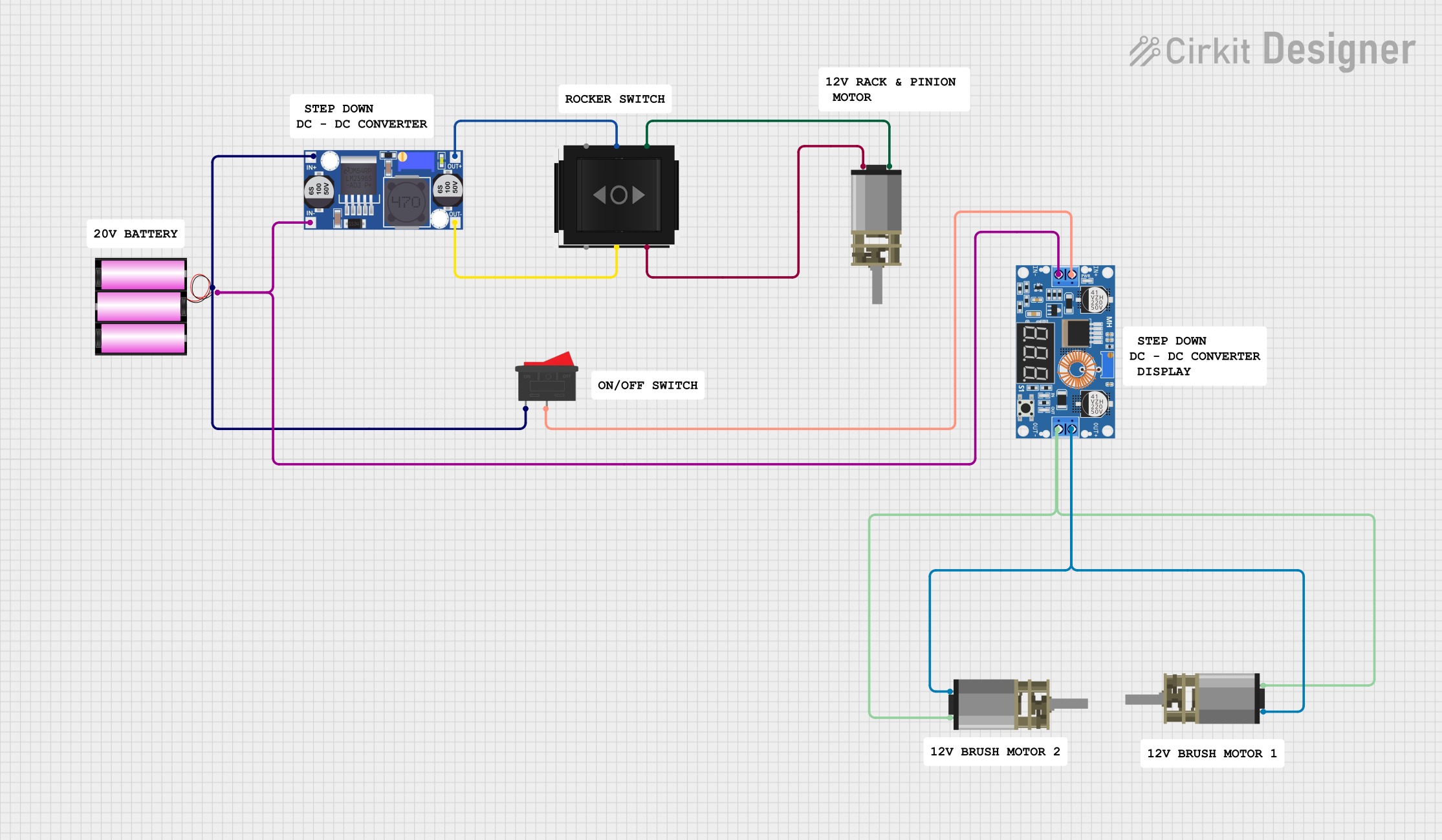
 Open Project in Cirkit Designer
Open Project in Cirkit Designer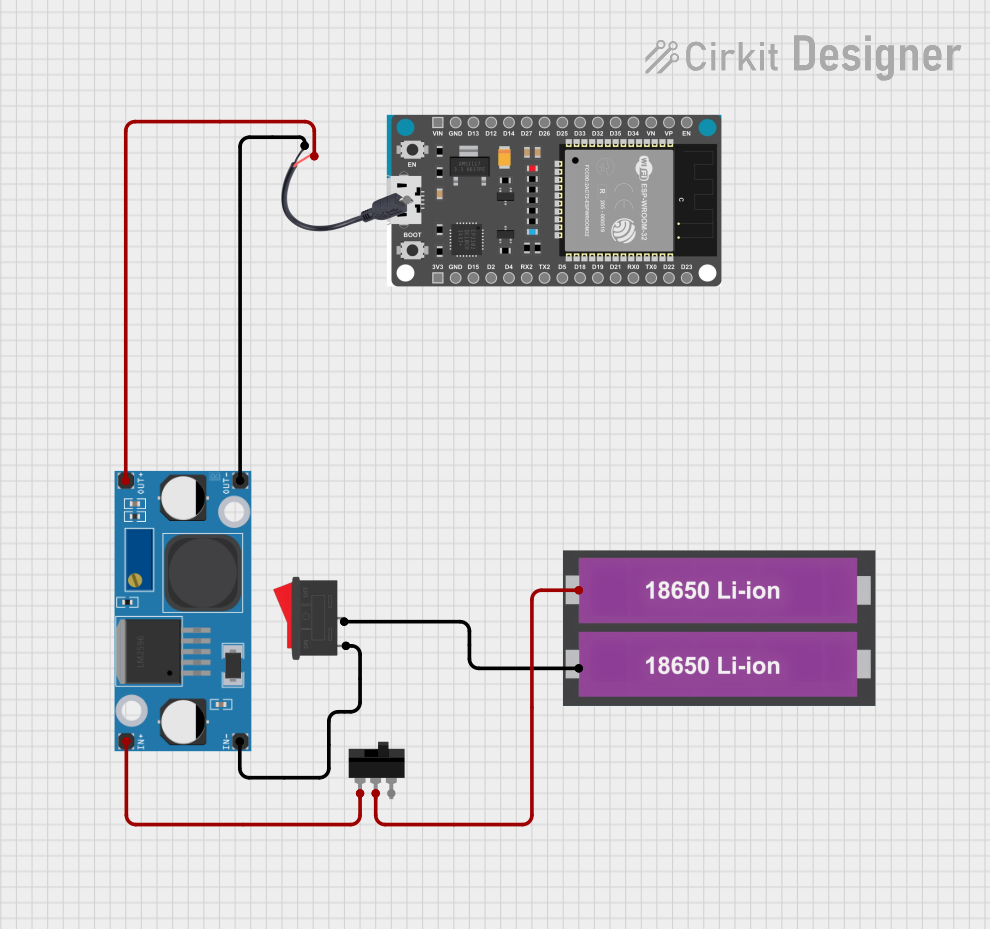
 Open Project in Cirkit Designer
Open Project in Cirkit Designer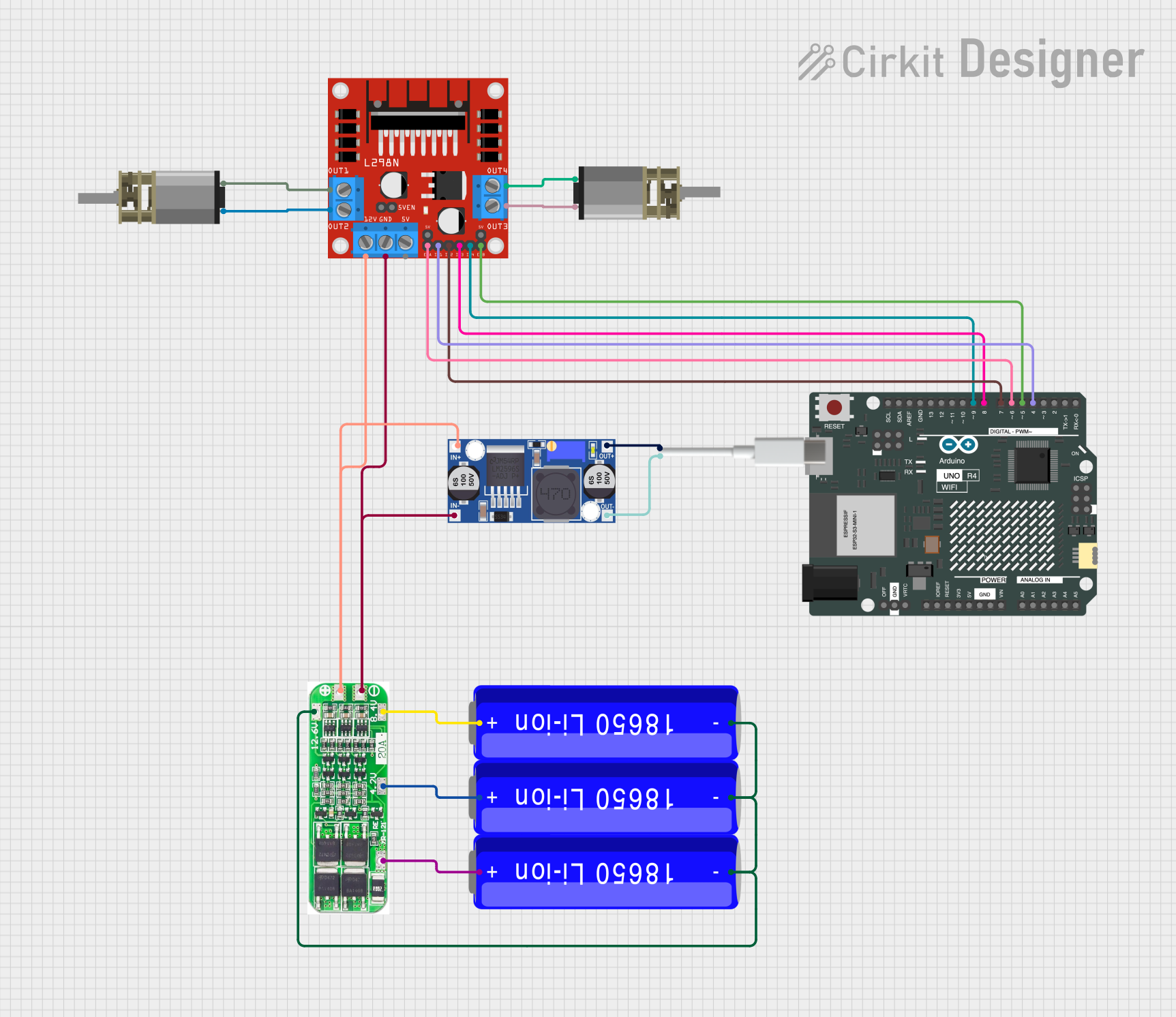
 Open Project in Cirkit Designer
Open Project in Cirkit Designer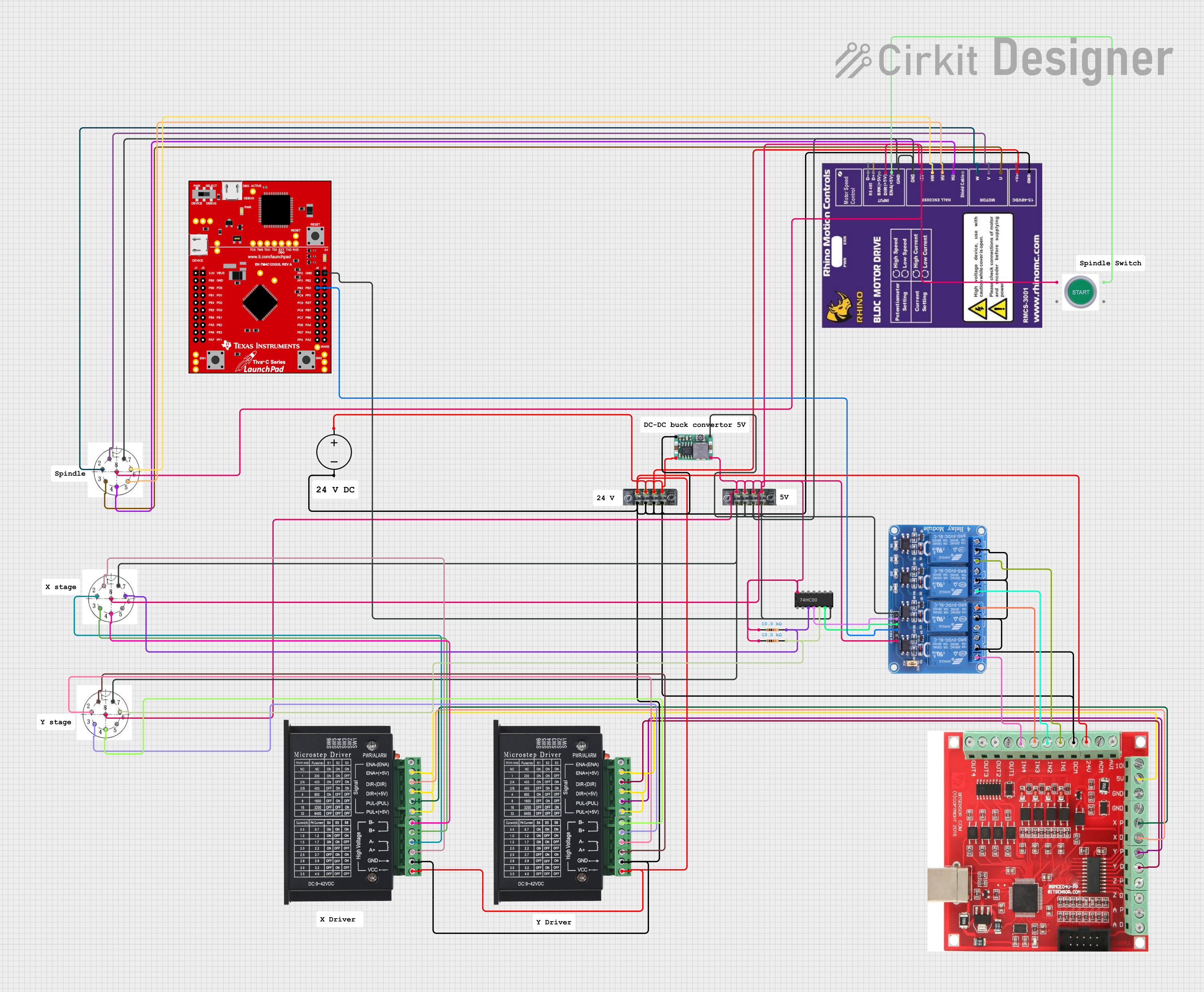
 Open Project in Cirkit Designer
Open Project in Cirkit DesignerExplore Projects Built with MH-MINI-360 Buck Converter

 Open Project in Cirkit Designer
Open Project in Cirkit Designer
 Open Project in Cirkit Designer
Open Project in Cirkit Designer
 Open Project in Cirkit Designer
Open Project in Cirkit Designer
 Open Project in Cirkit Designer
Open Project in Cirkit DesignerCommon Applications and Use Cases
- Powering microcontrollers (e.g., Arduino, ESP32, Raspberry Pi Pico)
- Battery-powered projects requiring voltage regulation
- LED drivers and lighting systems
- Portable electronics and wearables
- Robotics and IoT devices
Technical Specifications
The MH-MINI-360 buck converter is designed to deliver reliable performance in a variety of applications. Below are its key technical details:
| Parameter | Specification |
|---|---|
| Input Voltage Range | 4.75V to 23V |
| Output Voltage Range | 1.0V to 17V (adjustable via potentiometer) |
| Maximum Output Current | 3A (with proper heat dissipation) |
| Efficiency | Up to 96% |
| Switching Frequency | 340 kHz |
| Dimensions | 17mm x 11mm x 3.8mm |
| Operating Temperature | -40°C to +85°C |
Pin Configuration and Descriptions
The MH-MINI-360 has four pins for input and output connections:
| Pin Name | Description |
|---|---|
| VIN | Positive input voltage (4.75V to 23V) |
| GND | Ground (common for input and output) |
| VOUT | Positive output voltage (adjustable) |
| GND | Ground (common for input and output) |
Usage Instructions
How to Use the MH-MINI-360 in a Circuit
Connect Input Voltage:
- Connect the VIN pin to the positive terminal of your power source (e.g., battery or power supply).
- Connect the GND pin to the ground terminal of your power source.
Connect Output Voltage:
- Connect the VOUT pin to the positive terminal of the load (e.g., microcontroller, LED, or other device).
- Connect the GND pin to the ground terminal of the load.
Adjust Output Voltage:
- Use a small screwdriver to turn the onboard potentiometer clockwise to increase the output voltage or counterclockwise to decrease it.
- Measure the output voltage with a multimeter to ensure it matches your desired value before connecting the load.
Verify Connections:
- Double-check all connections to ensure proper polarity and avoid short circuits.
Important Considerations and Best Practices
- Heat Dissipation: The module can handle up to 3A, but proper heat dissipation (e.g., a heatsink or adequate airflow) is required for high-current applications.
- Input Voltage: Ensure the input voltage is at least 1.5V higher than the desired output voltage for stable operation.
- Output Voltage Adjustment: Always adjust the output voltage without a load connected to prevent damage to sensitive devices.
- Capacitor Requirements: For optimal performance, ensure the input and output capacitors are in place (pre-soldered on the module).
Example: Using MH-MINI-360 with Arduino UNO
Below is an example of how to use the MH-MINI-360 to power an Arduino UNO from a 12V power source:
- Set the output voltage of the MH-MINI-360 to 5V using the potentiometer.
- Connect the VIN pin of the MH-MINI-360 to the 12V power source.
- Connect the VOUT pin of the MH-MINI-360 to the 5V pin of the Arduino UNO.
- Connect the GND pins of the MH-MINI-360, power source, and Arduino UNO together.
// Example code for Arduino UNO powered by MH-MINI-360
// This code blinks an LED connected to pin 13
void setup() {
pinMode(13, OUTPUT); // Set pin 13 as an output
}
void loop() {
digitalWrite(13, HIGH); // Turn the LED on
delay(1000); // Wait for 1 second
digitalWrite(13, LOW); // Turn the LED off
delay(1000); // Wait for 1 second
}
Troubleshooting and FAQs
Common Issues and Solutions
No Output Voltage:
- Cause: Incorrect wiring or insufficient input voltage.
- Solution: Verify all connections and ensure the input voltage is within the specified range.
Output Voltage Fluctuates:
- Cause: Insufficient input power or unstable power source.
- Solution: Use a stable power source and ensure proper input and output capacitors are in place.
Overheating:
- Cause: Excessive current draw or poor heat dissipation.
- Solution: Reduce the load current or add a heatsink to the module.
Cannot Adjust Output Voltage:
- Cause: Faulty potentiometer or incorrect adjustment.
- Solution: Check the potentiometer for damage and adjust it carefully with a screwdriver.
FAQs
Q1: Can the MH-MINI-360 be used to power a Raspberry Pi?
A1: Yes, but ensure the output voltage is set to 5V and the current requirement of the Raspberry Pi (typically 2.5A for most models) does not exceed the module's capacity.
Q2: Is the module protected against reverse polarity?
A2: No, the MH-MINI-360 does not have reverse polarity protection. Always double-check your connections to avoid damage.
Q3: Can I use the MH-MINI-360 to charge a battery?
A3: While it can regulate voltage, it is not designed as a dedicated battery charger. Use a proper charging module for battery applications.
Q4: What is the efficiency of the module at low loads?
A4: The efficiency remains high (typically above 80%) even at low loads, but it is most efficient at moderate to high loads.